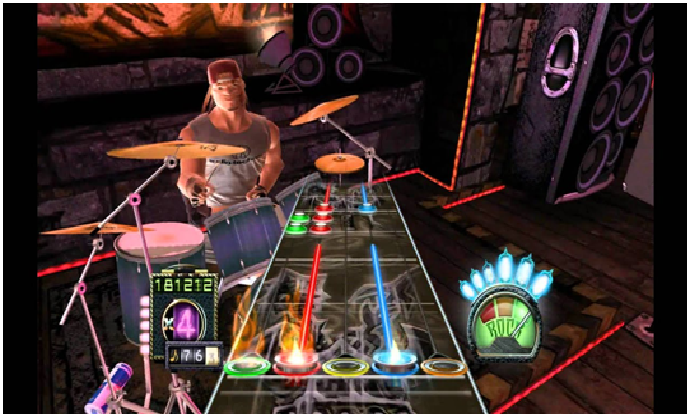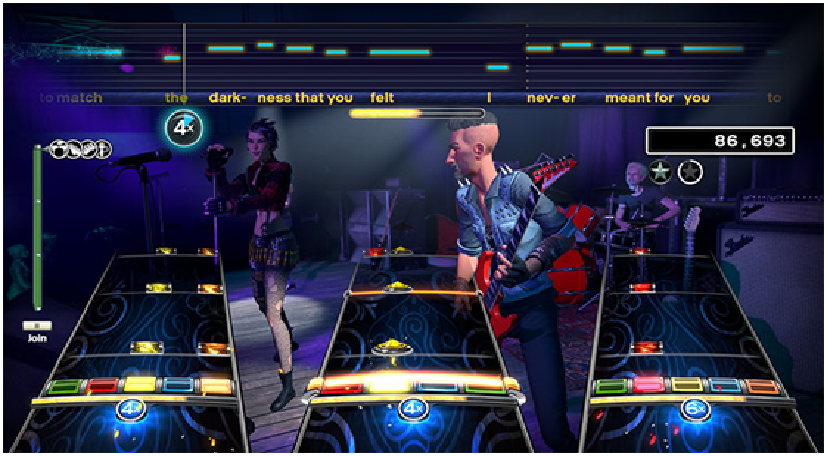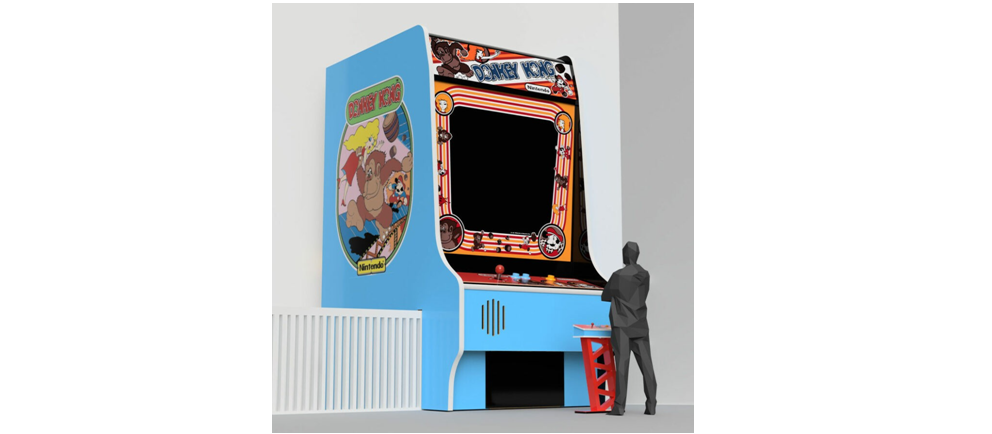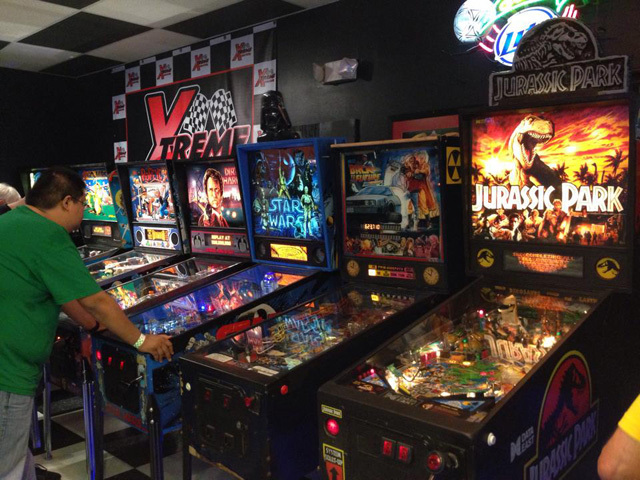Back in the late ‘80s when arcade gaming was still reinventing itself after the market crash of 1983, there was a genre of games that breathed life into the entire industry, fighting games. As we’ve mentioned several times already, it was titles like Street Fighter and Mortal Kombat that saved the arcade gaming industry in the West back when it was headed down the slippery slope of obscurity. However, as the business became more profitable for developers and publishers in the West, along with improvements in technology, they started to venture into bringing new genres and prototypes from abroad.
The Origin of Rhythm Gameplay
Japanese developers have generally led the way in this genre, although it was the West that toyed around with the concept of playable music games first. Atari would release a pseudo-interactive music product called Atari Video Music in 1977. This took the input from a stereo and “visualized” it into graphics; a concept that would become fully interactive almost twenty years later when Atari included the Virtual Light Machine in their Atari Jaguar CD add-on. In 1984, they were prototyping an idea for a music dancing arcade game simply called the Atari Dance Machine. By the prototype footage found, this beast of a machine would have sported 3 monitors, two of which would have shown a music video, while the central display would have shown the dance moves you were supposed to copy. It would have used a camera to detect the movement of a user’s body – all this being thought about almost 30 years before Konami launched Dance Evolution Arcade.
Check out this video of “Dance Machine,” a concept created by Atari in 1984 that was found during the @museumofplay U-Matic digitization project made possible by the @RRLC1966! Just imagine the technology that would be required to make it, especially in the 1980’s. pic.twitter.com/PQSOYeermg
— Andrew Borman (@Borman18) February 27, 2019
For games that were actually released and tackled the idea of making music an integral part of the gameplay, there wasn’t a big selection of games to choose from, but there were a few: Dance Aerobics in 1987 for the NES, Drum Blaster in 1992 for PC-DOS and PaRappa the Rapper in 1996 for the PSX serve as a few examples. The success of the latter game quickly led to a wide slew of similar games that built upon the idea of a video game serving as a medium for interacting with the music as opposed to just listening to it.
However, while the first rhythm games were released mostly for home consoles, their ideal home was in the arcades. A bigger cabinet and access to more floor space meant that developers could go all out in every machine and design controls that provided the best gameplay experience for these games. In stark contrast with console rhythm games, which might have required a deployable flimsy floor mat, their arcade counterparts had the dance pads built into the machine itself.
In 1997, the first formal arcade rhythm games were released in Japan. The first title in this was Beatmania by Konami, which featured keyboard controls and a pad shaped like a vinyl record that players had to interact with as part of the game. This title was a massive success and single-handedly made Konami’s Games and Music division to change its name to Bemani in homage (if you’ve ever heard the term “Bemani game,” that is referring to any Konami rhythm arcade game). They also began experimenting with other titles in the genre, among which we can find GuitarFreaks, DrumMania and Pop’n Music, both of which still continue to receive releases to this day.
However, despite their massive success in the Asian market, US game distributors bristled at the thought of something so strange, so Western gamers would only discover them at certain arcades who bothered with Japanese imports. That would change however, once Konami’s Dance Dance Revolution (DDR) was discovered through the same importation method in 1998. While floormat pad controllers had existed prior to DDR, this game was a true trailblazer in the arena of creating pressure-sensitive floor pads, and with good reason. This was thanks to the arcade format – a flimsy floormat wouldn’t last five minutes in an arcade environment, so the controls needed to be built like a tank. Between that quality, unique gameplay and a focus on the physical, DDR quickly became the thing of legends in the broader culture.
DDR was soon joined by the likes of a series called Pump It Up (PIU)by the South Korean company known as Andamiro. Featuring similar gameplay, the position of the arrows was moved from the cardinal directions to the diagonal ones, and would feature more “K-Pop” style songs than DDR.
Both DDR and PIU enjoy new editions released to the market at regular intervals, although Konami still tends to keep DDR in Asia, while PIU sees broader access around the world.
Harmonix and the Legacy of DDR
As its name suggests, Dance Dance Revolution is all about simulated dancing, brought on by overlapping arrows that the player must stomp on when a particular arrow hovers over one of the matching directions. It revolves around playing the game as if you’re doing another activity, which is something that these rhythm games are known for. In this sense, it’s more a discipline than a game; one that requires hours upon hours of physical conditioning and training to master.
This form of gameplay, and the success of the genre, in general, led to the creation of similar titles that borrowed many elements, while also providing their own spin on the formula. This movement was led, in great part, by the hand of Harmonix, a company that was founded in 1995. This organization was the main purveyor of rhythm games in the West. However, they were not always the titans that there are today.

Harmonix started off in the mid-’90s as a company that developed games with musical elements in them, with little to no success. They operated without a single dollar in revenue for about the first 5 years. This stint ended when Sony approached them to develop Frequency, the game that became their first hit, followed by Amplitude, a sequel that also garnered much attention from fans and critics. However, both titles failed to become mainstream successes, which was mostly due to not featuring popular songs in their lineup.
It wasn’t until RedOctane, a third-party developer of console peripherals, approached Harmonix and asked for them to develop a game featuring guitar-shaped controllers, much like GuitarFreaks in Japan. And thus, the development of Guitar Hero begun.
In 2005, Harmonix released their first Guitar Hero game, which became the company’s first financial success and went off to spawn an entire franchise of 6 different games, not including its ports into various home consoles. Furthermore, after the sale of Harmonix to Viacom in 2006, the team expanded its scope and started working on Rock Band, another rhythm game that would go on to set the bar for the genre at the time. This new game featured not only guitar gameplay, but also drums, bass, and even voice. Furthermore, while it featured around 50 songs on the discs, players could download over 2,000 songs as DLC, increasing the game’s replay value through the roof.
Between Guitar Hero and Rock Band, the games have sold over tens of millions of units across the globe, netting over $1 billion in revenues. This was all made possible by the success that games like DDR initially had in Japan. However, while these titles in the West are somewhat in decline currently, the scene is still going strong in the land of the rising sun. In this sense, all that’s left is for someone with the ambition and a keen eye for these games to reinvent the franchise and bring it back into mainstream media.
In 2009, Raw Thrills, Harmonix and Konami would further boost the Guitar Hero brand with the release of Guitar Hero Arcade. Based upon Guitar Hero III, this quickly became a smashing success on the arcade market as it was a name that everyone recognized. It would have continued to make waves with DLC song content and even a planned drum set attachment, but unfortunately an organization that deals with music licensing on jukeboxes threw a fit when they discovered the game and shut it down by demanding that every arcade pay them licensing fees to use it. While this killed new sales of the game, a few thousand units were sold and you can still find this game out there in many arcades across the world.
Japanese developers are still the primary source of keeping the rhythm game genre alive for arcades these days, but unfortunately a vast majority of those releases are still handled through the occasional imports. Interesting and unique concepts are developed by the likes of Konami, Sega, Taito and even Capcom, but most gamers won’t get a chance to play these titles thanks to the limited availability. That being said, independent developers like Step Revolution have come up with a fantastic alternative to DDR & PIU called Step ManiaX. Check it out on our website when you get a chance.
Here at PrimeTime Amusements, we like to keep ahead of the curve in arcade game rental and sales and pride ourselves in providing the best service in the country. If you’re looking for a game in particular, or have a few questions about the industry, feel free to give us a call at 1.800.550.0090 or to swing by at 5300 Powerline Rd. Suite 210, Ft. Lauderdale, Florida, 33309.





